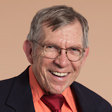More Change Than a New Chairman at the Fed
No matter who winds up at the head of the Federal Reserve, the nation’s central bank will see some big changes — and even bigger challenges — next year.

Look beyond the battle to succeed Ben Bernanke as chairman of the Federal Reserve. Front-runner Janet Yellen, vice chairman for the past three years, comes well qualified, but she faces challenges no chairman has ever faced.
Just ahead is a rare wave of new faces joining the policy-setting Federal Open Market Committee, which consists of the seven governors and the presidents of the 12 regional Federal Reserve banks. The voting members of the FOMC include, in addition to the chairman and vice chairman, the five other governors and five of the regional bank presidents — the president of the New York Fed and four others who rotate into voting positions each year.
One of those governors’ spots is vacant now. Another might as well be: Sarah Raskin skipped the recent meeting in light of her pending departure to take a top spot at the Treasury Department. Bernanke will leave by Jan. 31. Two others are likely to exit in 2014: Jerome Powell, whose term expires at the end of January, and Jeremy Stein, who will return to his tenured professorship at Harvard by late May. Including the four rotating regional bank president slots, that means nine new faces among the 12 voting members next year — or 10, if Yellen doesn’t get the nod as chairman and departs.

Sign up for Kiplinger’s Free E-Newsletters
Profit and prosper with the best of expert advice on investing, taxes, retirement, personal finance and more - straight to your e-mail.
Profit and prosper with the best of expert advice - straight to your e-mail.
Historically, the governors fall in line behind the chairman. They’re usually picked on the basis of expertise in bank regulatory issues, consumer credit policies or other technical work that the Fed carries out. But they cast votes on monetary policy, and their allegiance to the chairman can’t be taken for granted and will be closely watched over the next few months. Regional bank presidents more frequently break ranks and question the chairman’s direction.
All this new blood will make it harder for financial markets to gauge the effectiveness of the new chairman’s leadership, adding volatility to long-term interest rates. And until the newcomers settle in, rates are likely to be a bit higher than they otherwise would have been.
That matters. Although the bond market moves in small increments, just a quarter-point increase in interest rates can add thousands to the cost of a home buyer’s mortgage and hundreds of thousands to the price of financing a business merger or acquisition.
Recent history clearly demonstrates the sensitivity of financial markets to uncertainty about the Federal Reserve’s direction. The 10-year Treasury yield has nearly doubled since spring, rising from 1.6% then to nearly 3% now. Much of the increase came after an FOMC statement last June. Financial markets interpreted it to mean that Bernanke and company were signaling a sooner-than-expected boost in the federal funds rate. The stock market took a tumble, and interest rates rose in Europe as well as in the U.S. Bernanke hastened to make clear that no such signal was intended, and volatility eased. But the increase in rates hasn’t reversed.
The markets want to see where a new chairman will lead the FOMC and whether dissent emerges. Some new FOMC members will want the central bank to focus more on the goal of holding inflation in check, arguing that even though prices are not surging now, the Fed is drifting off course. That sets the stage for a clash with Yellen, who thinks the focus should be on the other half of the Federal Reserve’s two-pronged mission: managing — in this case, reducing — unemployment.
[page break]
Moreover, the Fed faces an unprecedented challenge: managing the withdrawal of $2.8 trillion of liquidity — the mountain of debt it has accumulated to help stimulate the economy — without causing interest rates to rise too sharply and derail economic growth. The trick will be to persuade financial markets that the tapering of the Fed’s bond buying will proceed slowly, and that the short-term fed funds rate will stay near zero for a time even after unemployment dips below the 6.5% level that Bernanke has identified as a benchmark for the Fed to reverse course.
Financial markets like it when there’s a unity of opinion from the Fed in setting policy. In contrast, Chairman Bernanke welcomed dissent (unlike many of his predecessors) and encouraged regional bank presidents to make their views known. Now, as Bernanke departs, the new chairman may get more difference of opinion than he or she wants. Striking the right chord — tolerating dissenting views without allowing them to become so loud or so frequent that markets are uneasy — will test the new chairman’s leadership.
In addition, challenges from outside of the Fed’s orbit are inevitable. Among them: a coming clash between Obama and congressional Republicans over another increase in the debt ceiling. In a similar situation three years ago, then Treasury Secretary Timothy Geithner said politicians risked another deep depression if the U.S. reneged on paying its debts.
So fasten your seat belts for a wild ride over the next few months. Mark Zandi, chief economist with Moody’s Analytics, is hopeful. “I think this uncertainty gets wrung out early next year once the new Fed is in place,” he says.
Diane Swonk, chief economist with Mesirow Financial, sees a slightly different picture. She likens the Fed’s unprecedented venture into bond buying by the trillions to Dorothy waking up not in Kansas but in Oz. It’s a whole different world, Swonk points out, noting that though Yellen will provide continuity, it could be a decade before setting monetary policy returns to the old days of tweaking the fed funds rate.
Get Kiplinger Today newsletter — free
Profit and prosper with the best of Kiplinger's advice on investing, taxes, retirement, personal finance and much more. Delivered daily. Enter your email in the box and click Sign Me Up.

-
 When Should You Hand Over the Keys — to Your Investments?
When Should You Hand Over the Keys — to Your Investments?The secret to retirement planning? "The best time to hand over the keys is before you’ve realized you need to hand over the keys."
By Maurie Backman
-
 A checklist for high-net-worth individuals looking to maintain and grow their wealth.
A checklist for high-net-worth individuals looking to maintain and grow their wealth.A strategic guide to managing, preserving, and expanding your wealth for long-term financial security.
By Dori Zinn
-
 The Economic Impact of the US-China Trade War
The Economic Impact of the US-China Trade WarThe Letter The US-China trade war will impact US consumers and business. The decoupling process could be messy.
By David Payne
-
 AI Heads to Washington
AI Heads to WashingtonThe Kiplinger Letter There’s big opportunity for AI tools that analyze MRIs and other medical images. But also big challenges that clinicians and companies will have to overcome.
By John Miley
-
 The AI Doctor Coming to Read Your Test Results
The AI Doctor Coming to Read Your Test ResultsThe Kiplinger Letter There’s big opportunity for AI tools that analyze CAT scans, MRIs and other medical images. But there are also big challenges that human clinicians and tech companies will have to overcome.
By John Miley
-
 The New Space Age Takes Off
The New Space Age Takes OffThe Kiplinger Letter From fast broadband to SOS texting, space has never been more embedded in peoples’ lives. The future is even more exciting for rockets, satellites and emerging space tech.
By John Miley
-
 Rising AI Demand Stokes Undersea Investments
Rising AI Demand Stokes Undersea InvestmentsThe Kiplinger Letter As demand soars for AI, there’s a need to transport huge amounts of data across oceans. Tech giants have big plans for new submarine cables, including the longest ever.
By John Miley
-
 What DOGE is Doing Now
What DOGE is Doing NowThe Kiplinger Letter As Musk's DOGE pursues its ambitious agenda, uncertainty and legal challenges are mounting — causing frustration for Trump.
By Matthew Housiaux
-
 A Move Away From Free Trade
A Move Away From Free TradeThe Letter President Trump says long-term gain will be worth short-term pain, but the pain could be significant this year.
By David Payne
-
 Trump’s Whirlwind Month of Crypto Moves
Trump’s Whirlwind Month of Crypto MovesThe Kiplinger Letter The Trump administration wants to strengthen U.S. leadership in the cryptocurrency industry by providing regulatory clarity.
By Rodrigo Sermeño